Brake Rotors 101: Why Your Choice Matters
Your brake rotors play a crucial role in stopping power, durability, and overall driving feel. Whether you're cruising around town, carving up backroads, or pushing your car to the limit on track days, the right rotors make a noticeable difference.
But with so many options—stock, drilled, and slotted rotors—how do you know which one is right for your setup? This guide will break down the pros, cons, and ideal use cases for each type so you can make an informed decision.
How Brake Rotors Work & Why They’re Not All the Same
Brake rotors are at the heart of your braking system. When you hit the brakes, your pads clamp onto the rotor, creating friction that slows the vehicle. But not all rotors perform the same—heat buildup, wear, and environmental factors all affect how well your brakes function over time.
Several factors determine which type of rotor is best for your driving needs:
-
Driving Style – Do you need reliable daily braking, high-performance stopping power, or something built for towing?
-
Vehicle Type – Lightweight sedans, sports cars, and trucks all have different braking demands.
-
Climate & Environment – Wet roads, extreme heat, or elevation changes can impact how rotors perform.
Matching your rotor choice to these factors will ensure you get the best braking performance for your setup.
Stock Rotors: Reliable & Budget-Friendly, But Are They Enough?
Shop the Centric Premium Rear Brake Rotor for Evo 8/9
What Are Stock Rotors?
Stock rotors, or OEM (Original Equipment Manufacturer) rotors, are the standard brake discs that come equipped on most vehicles. These rotors feature a smooth, flat surface and are designed for consistent, everyday braking performance without the need for high-performance enhancements.
Why Choose Stock Rotors?
-
Affordable and Easy to Replace – As the most budget-friendly option, stock rotors are widely available and cost-effective for routine maintenance.
-
Reliable for Normal Driving – Designed to handle stop-and-go traffic and highway driving, stock rotors provide long-lasting durability under typical conditions.
-
Low Maintenance – With no extra design elements like slots or drilled holes, stock rotors require minimal upkeep beyond standard pad replacements.
Potential Drawbacks
-
Limited Heat Dissipation – Stock rotors can overheat under heavy braking, leading to brake fade and reduced performance over time.
-
Less Effective in Wet Conditions – Without slots or drilled holes to manage moisture, braking efficiency may be reduced in rainy or humid environments.
-
Not Ideal for Performance Driving – Stock rotors are not built for aggressive braking, high-speed stops, or track use, where heat management is critical.
Best For:
-
Daily drivers and commuters who need reliable,
-
cost-effective braking without high-performance demands.
-
Vehicles used primarily in city and highway driving, where brake stress remains moderate.
If you’re looking for a dependable, no-frills replacement for your vehicle’s braking system, stock rotors are a solid choice.
Drilled Rotors: Better Cooling & Performance or a Weak Link?
Shop the DBA 5000 Series Gold Front Brake Rotor for Subaru WRX
What Are Drilled Rotors?
Drilled rotors have holes strategically placed across the rotor surface to improve heat dissipation and enhance braking performance, particularly in wet conditions. This design helps maintain braking efficiency by allowing heat, water, and gas buildup to escape more easily. Because of their cooling properties and sporty aesthetic, drilled rotors are a popular choice for performance street cars and vehicles frequently driven in humid or rainy climates.
Why Choose Drilled Rotors?
-
Better Heat Dissipation – The drilled holes allow airflow through the rotor, helping to cool down the braking system and reduce the risk of brake fade.
-
Improved Wet Braking – Water can escape through the holes, preventing moisture buildup and ensuring consistent braking in wet or humid conditions.
-
Sporty, High-Performance Look – Drilled rotors add a race-inspired aesthetic, making them a great option for enthusiasts looking to enhance their vehicle’s appearance.
Potential Drawbacks
-
Can Crack Under Extreme Stress – The holes create weak points, making drilled rotors prone to cracking when subjected to excessive heat or heavy braking loads, such as track driving.
-
Reduced Surface Area – With less direct contact between the brake pad and rotor, friction and stopping power may be slightly reduced compared to solid or slotted rotors.
-
Not Ideal for Heavy-Duty Use – Vehicles used for towing, repeated high-speed braking, or extreme performance driving may experience premature wear with drilled rotors.
Best For:
-
Performance street cars that need improved cooling without extreme track abuse.
-
Daily drivers in wet or humid climates where moisture buildup can impact braking efficiency.
-
Drivers looking for a stylish, high-performance appearance without the need for aggressive braking performance.
If you're looking for better cooling and improved wet-weather braking, drilled rotors are a great option.
Explore our selection of [drilled rotors] designed for your vehicle’s needs.
Slotted Rotors: The Go-To Choice for Performance & Durability
Shop the StopTech Slotted Sport Brake Kit for Evo 8/9
What Are Slotted Rotors?
Slotted rotors feature precision-machined grooves on their surface, designed to enhance braking performance by increasing friction, removing debris, and preventing brake pad glazing. Unlike drilled rotors, slotted designs prioritize durability and consistent performance under extreme braking conditions, making them a popular choice for high-performance, heavy-duty, and off-road applications.
Why Choose Slotted Rotors?
-
Stronger Brake Bite & Improved Stopping Power – The slots create additional friction, enhancing initial braking response and pedal feel.
-
Prevents Brake Pad Glazing & Debris Buildup – The grooves help clear away brake dust, gas, and moisture, keeping the braking surface clean for consistent stopping power.
-
More Durable Than Drilled Rotors – Unlike drilled rotors, slotted rotors are less prone to cracking under high heat and stress, making them ideal for aggressive driving.
Potential Drawbacks
-
Faster Brake Pad Wear – The added friction from the slots can lead to quicker pad degradation, especially with softer performance pads.
-
Increased Brake Noise – Slotted rotors can be slightly louder than smooth or drilled rotors, which may be noticeable in everyday driving.
-
Less Effective in Wet Conditions – While slots help remove debris, they do not disperse water as efficiently as drilled rotors, making them slightly less effective in heavy rain.
Best For:
-
Performance-driven vehicles needing enhanced stopping power and heat resistance.
-
Track cars and heavy-duty applications that endure repeated high-speed braking.
-
Towing and off-road vehicles, where durability and fade resistance are critical.
If you demand stronger braking performance under high stress situations, slotted rotors are an excellent upgrade.
Check out our selection of [slotted rotors] to find the perfect fit for your driving needs.
Drilled & Slotted Rotors: The Best of Both Worlds, or Just Overkill?

Shop the Hawk Talon Drilled & Slotted Rear Brake Rotor Set for 2007 Mazda 3/Mazdaspeed
What Are Drilled & Slotted Rotors?
Drilled & slotted rotors bring the best of both worlds, combining drilled holes for heat dissipation with slotted grooves for enhanced friction and debris removal. This hybrid design delivers a balance of cooling efficiency, stopping power, and durability, making it an excellent choice for performance-oriented drivers who demand reliable braking in a variety of conditions.
Why Choose Drilled & Slotted Rotors?
-
Superior Heat Dissipation & Cooling – The drilled holes allow air to flow through the rotor, reducing heat buildup and preventing brake fade during aggressive braking.
-
Stronger Pad Bite & Debris Removal – The slots improve friction and maintain consistent brake pad contact while clearing away gas, dust, and moisture.
-
Balanced Performance for Street & Track – Offers a blend of durability and cooling efficiency, making these rotors versatile for spirited driving, heavy braking, and occasional track days.
Potential Drawbacks
-
Higher Cost – Drilled & slotted rotors tend to be more expensive than single-design options due to their enhanced features.
-
Potential for Cracking Under Extreme Stress – The drilled holes can create weak points, making these rotors susceptible to cracking under prolonged high heat in extreme racing conditions.
-
Faster Brake Pad Wear – The added friction from the slotted surface may lead to quicker pad degradation, especially with aggressive driving.
Best For:
-
High-performance street cars that see occasional track use or heavy braking.
-
Drivers who are looking for a balance of cooling, stopping power, and durability.
-
Enthusiasts who want both functionality and a race-inspired look.
If you want a performance upgrade that improves cooling while maintaining strong stopping power, drilled & slotted rotors are an excellent choice.
Browse our selection of [drilled & slotted rotors] to find the right fit for your build.
How to Pick the Right Brake Rotors for Your Driving Style
Choosing the right brake rotors isn’t just about upgrading—it’s about selecting the best fit for your driving habits, vehicle, and environment. Here are the key factors to consider before making a decision.
Driving Style
-
Daily Commuting – Stock rotors are cost-effective and practical, providing reliable braking for stop-and-go traffic and highway driving.
-
Spirited Driving – Slotted or drilled rotors enhance braking performance for drivers who demand more from their braking system.
-
Track or High-Performance Use – Slotted or drilled & slotted rotors improve heat dissipation and maintain braking consistency under extreme conditions.
-
Towing & Off-Roading – Slotted rotors are best for vehicles carrying heavy loads or tackling rugged terrain, as they resist overheating and maintain stopping power.
Vehicle Type & Weight
-
Lightweight Cars – Drilled rotors improve cooling without adding unnecessary stress to the braking system.
-
Performance & Sports Cars – Slotted or drilled & slotted rotors enhance braking response and prevent fade under hard driving.
-
Trucks & SUVs – Slotted rotors provide added durability and heat resistance, making them ideal for towing, off-road driving, or hauling heavy loads.
Climate & Driving Conditions
-
Wet or Humid Areas – Drilled rotors excel at dispersing water, reducing the risk of hydroplaning and maintaining braking efficiency in wet weather.
-
Hot & Dry Environments – Slotted rotors help prevent excessive heat buildup without compromising rotor integrity.
-
Mixed Conditions – Drilled & slotted rotors offer a balanced solution, ensuring cooling efficiency in the heat while also maintaining performance in wet conditions.
Brake Pad Compatibility
-
Stock Pads – Work well with smooth, plain rotors but may wear down more quickly on slotted or drilled surfaces.
-
Performance Pads – Designed to withstand high temperatures, they pair well with slotted and drilled rotors for improved braking power.
-
Racing Pads – Best suited for track use but tend to wear rotors faster in regular street driving.
Budget Considerations
-
Stock Rotors – Most affordable, ideal for daily drivers needing a simple, reliable replacement.
-
Drilled or Slotted Rotors – A mid-range option that improves braking performance without breaking the bank.
-
Drilled & Slotted Rotors – The most expensive choice, but perfect for those who want a mix of style, cooling, and high-performance braking.
By considering these factors, you can choose the best rotors for your specific driving needs and ensure optimal braking performance for your vehicle.
Still unsure which option is right for you? Browse our [rotor selection] to find the perfect match for your driving style and budget.
Final Verdict: Which Rotors Are Right for You?
Choosing the right brake rotors is key to optimizing your braking performance, longevity, and overall driving experience. Each type of rotor serves a specific purpose, making it important to match your selection to your driving needs.
-
Stock Rotors – Reliable and cost-effective, ideal for daily commuting and standard driving.
-
Drilled Rotors – Designed for better cooling and wet-weather performance, making them a great option for street performance cars.
-
Slotted Rotors – Improve braking response and durability, perfect for aggressive driving, towing, and track use.
-
Drilled & Slotted Rotors – A balanced option that delivers enhanced cooling and stopping power for high-performance street cars and occasional track use.
The best rotor for you depends on your driving style, vehicle type, and performance expectations. Whether you're upgrading for better stopping power or simply replacing worn-out rotors, selecting the right type ensures safety, efficiency, and long-term reliability.

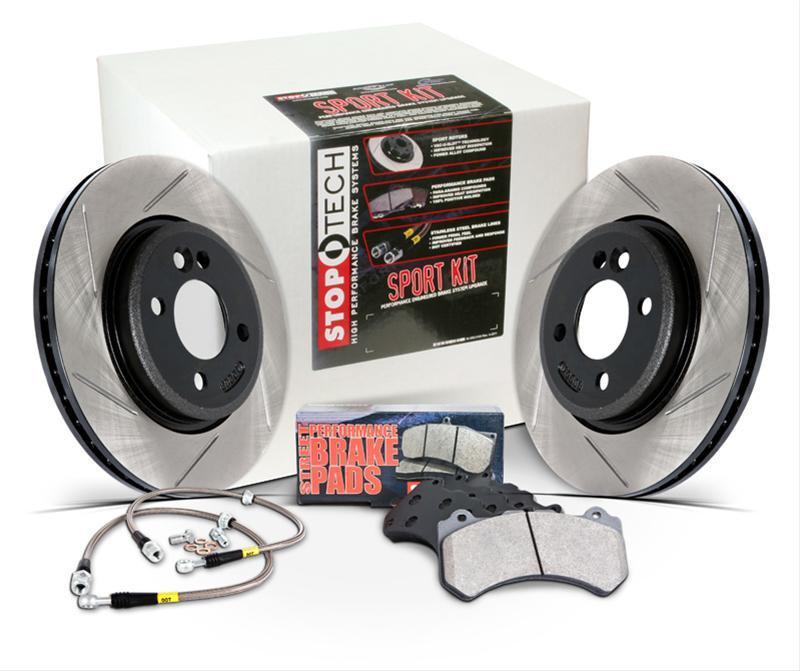
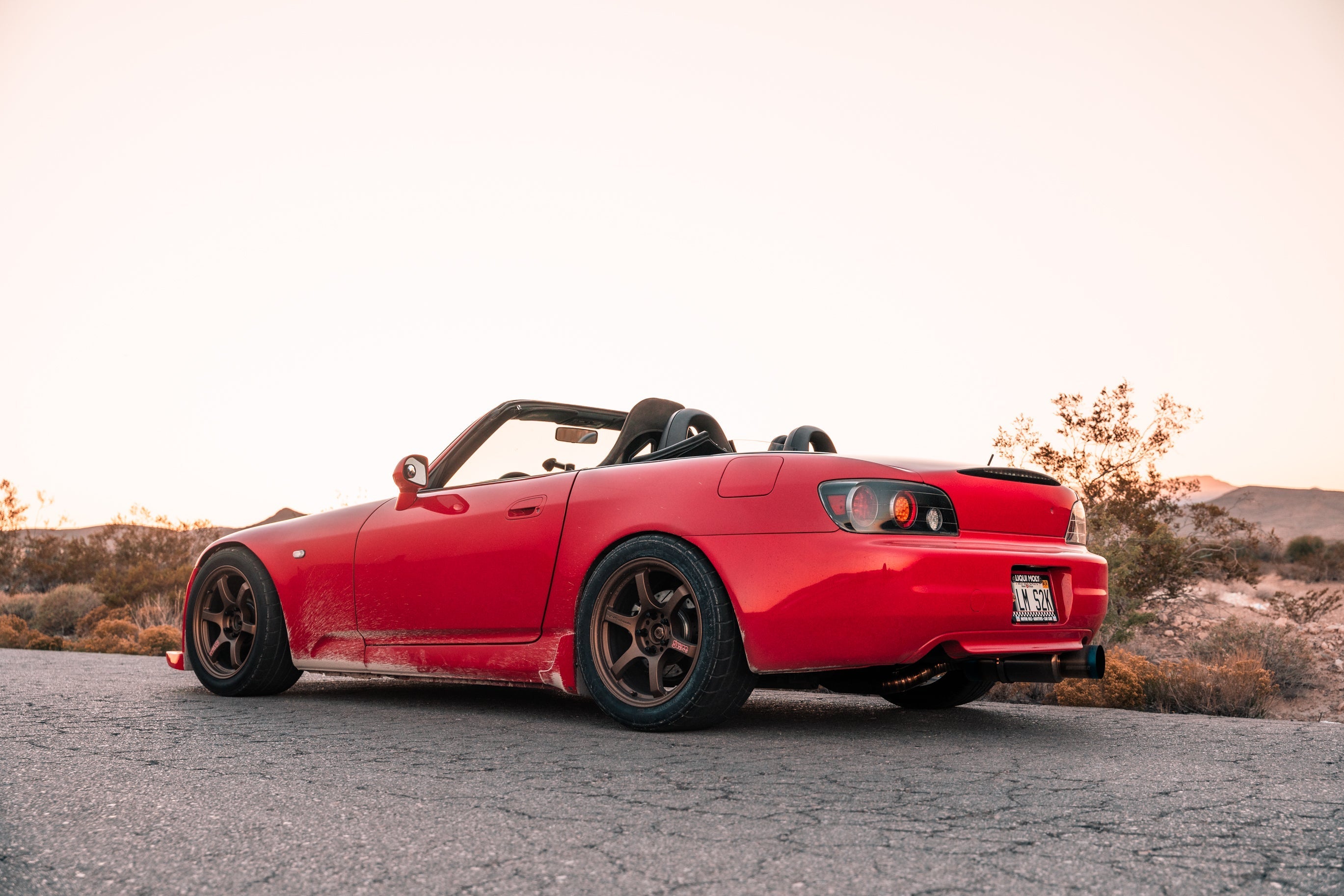
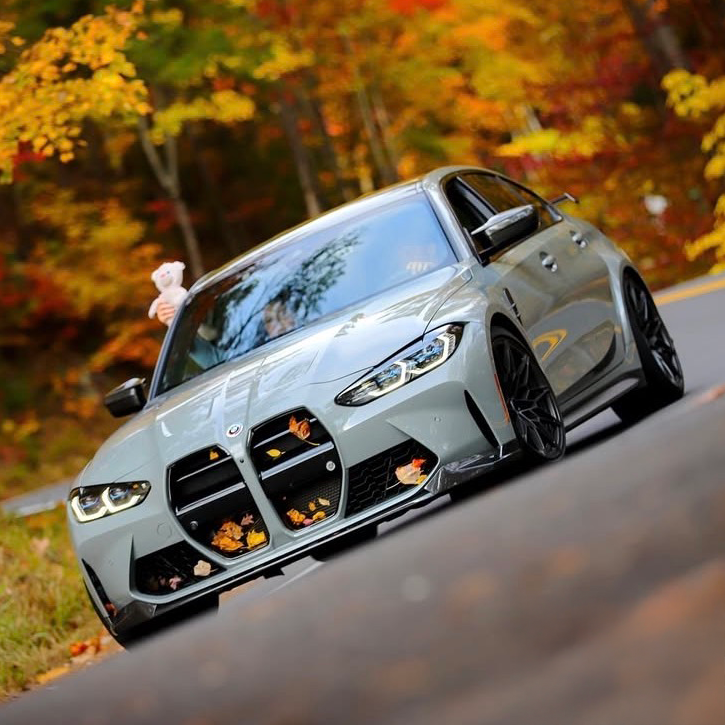
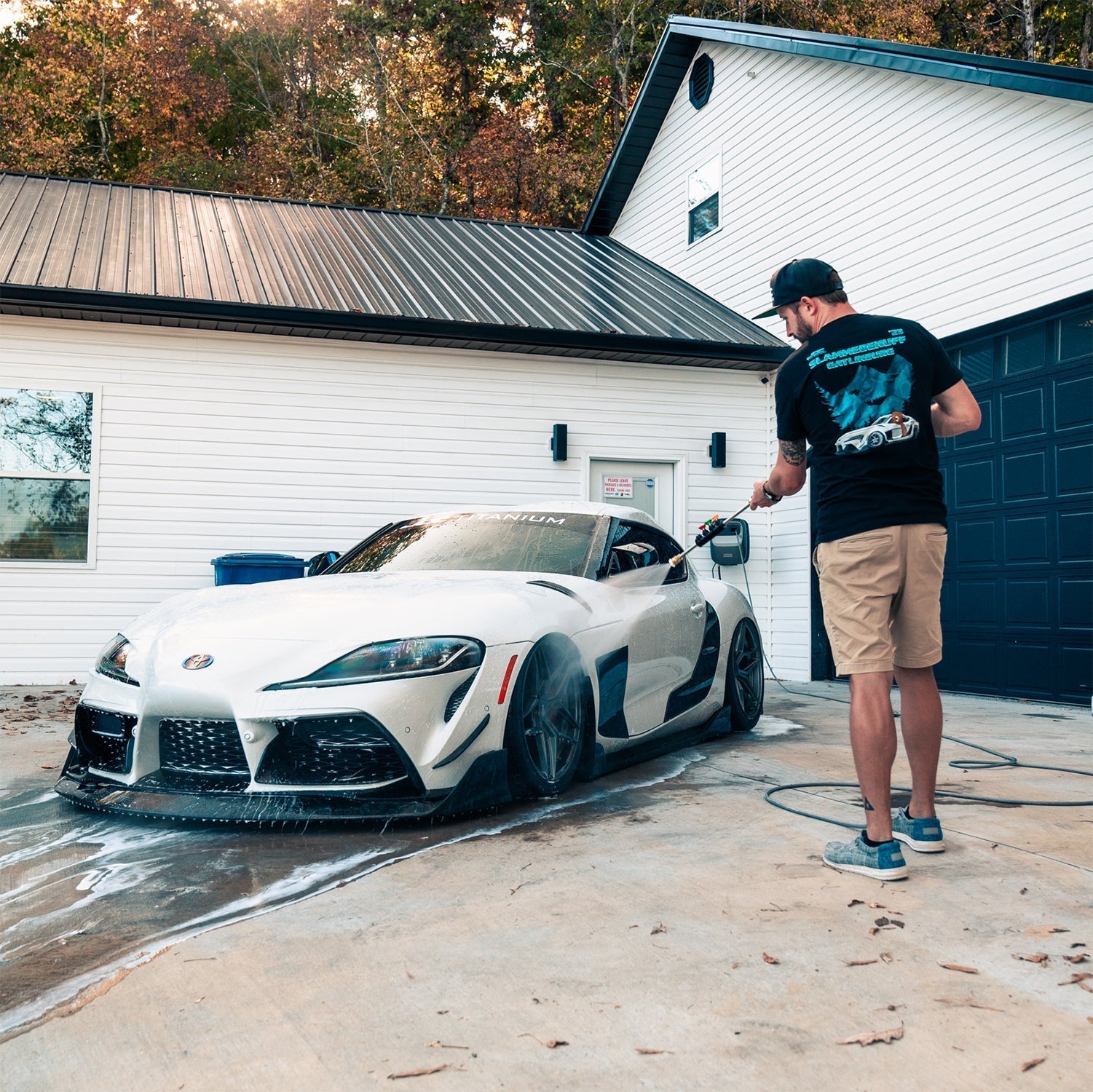
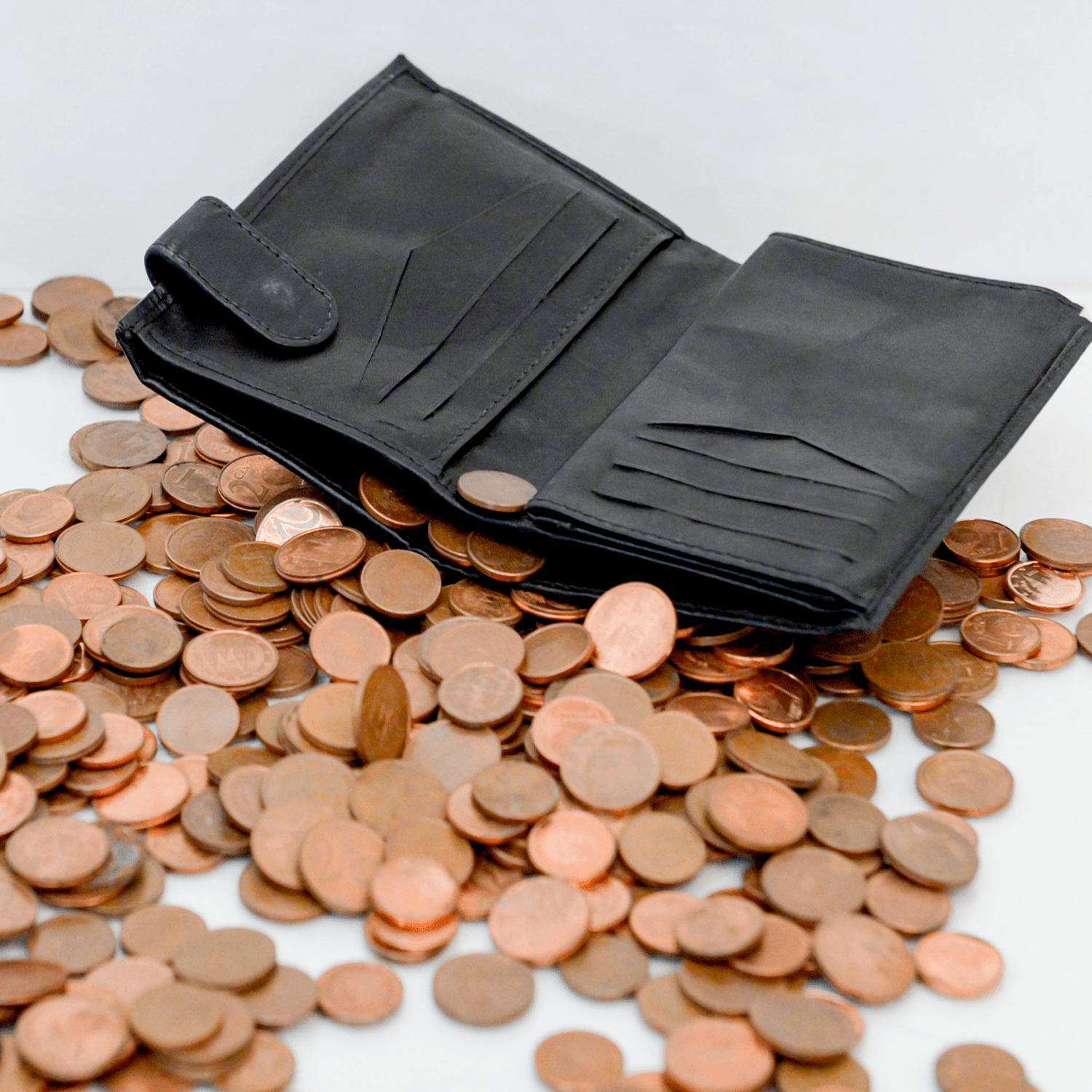
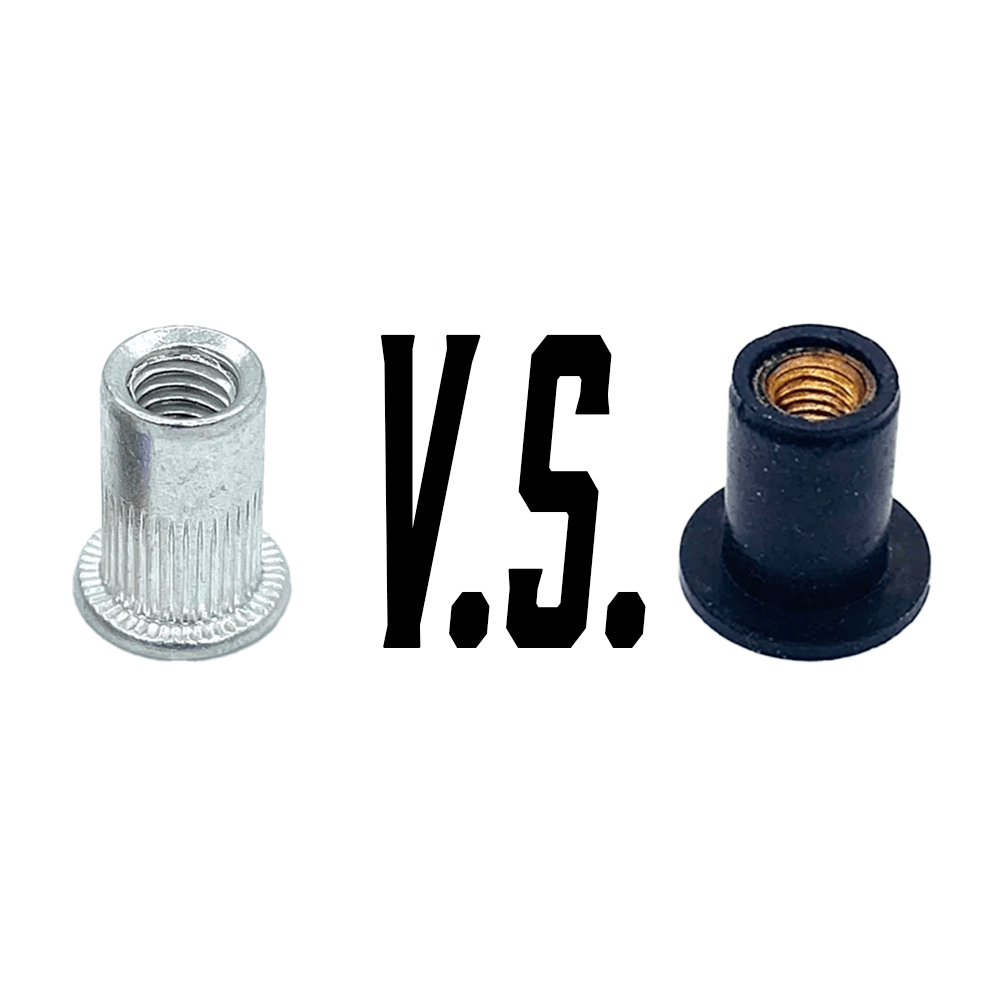
Share:
Top 5 Reasons To Upgrade To Titanium Dress-Up Hardware
Best Carbon Fiber Upgrades for Nissan 370Z